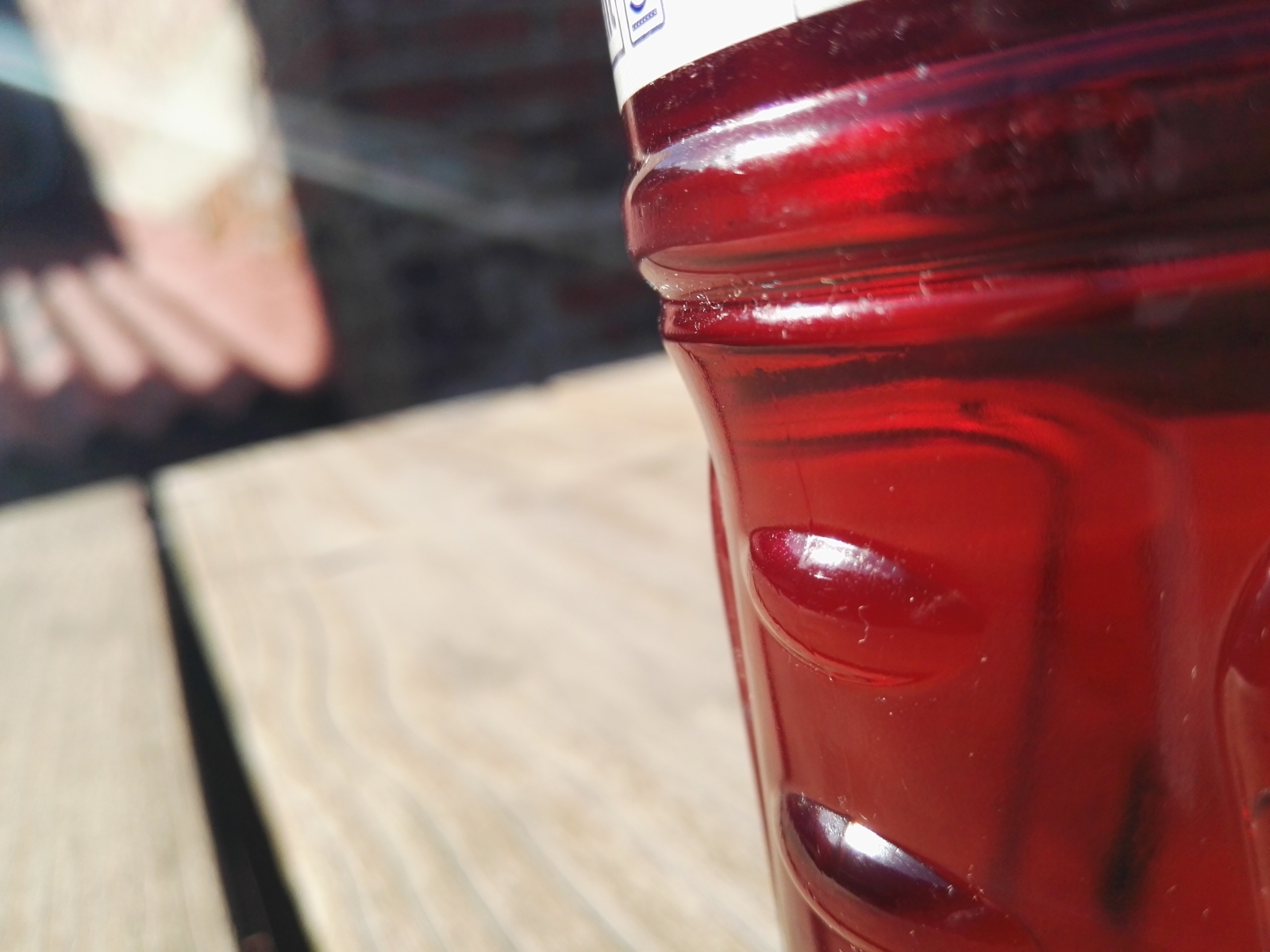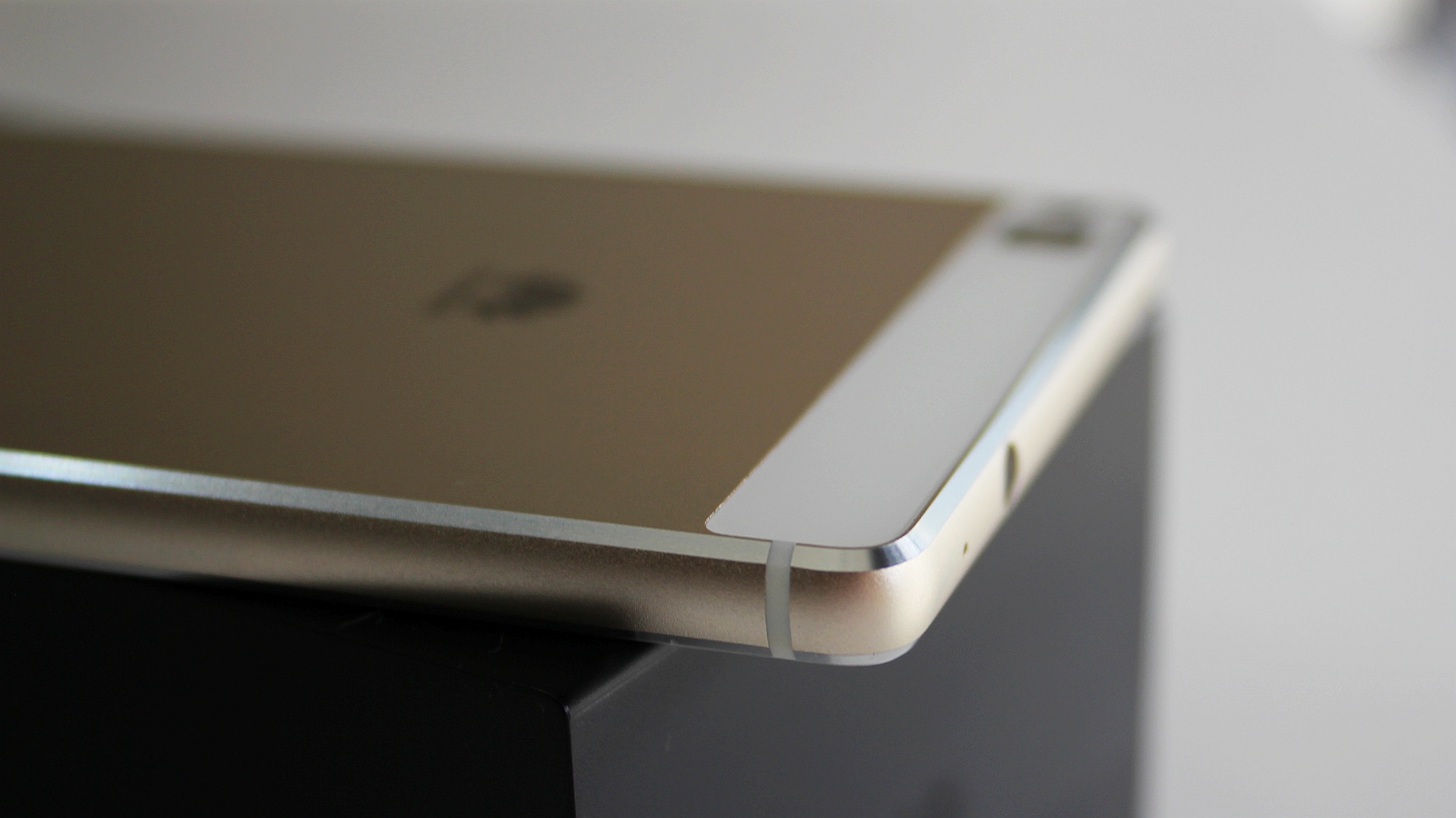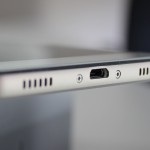AI isn’t coming. It’s already at your desk. And if you’re South African, chances are you’re ready to hit the ground running. A brand-new…
Huawei P8 review: metallic mastery

Another day, another flagship phone review. They’re getting tiresome now, aren’t they? Especially since all manufacturers seem to be making devices that look a great deal like the iPhone 6.
Huawei is next in line, and following its huge Huawei P8 launch in Johannesburg about two months ago, we got our dirty paws on the device for a few weeks.
Although I don’t quite like making my impressions felt so early in a review, I will say this: for a phone that does look like something cooked up in Cupertino, they were a few weeks well spent.
If you’re a Chinese phone brand fan, stick around. You’ll be pleased to know that, for once, we’re fairly excited to review phone that seems to do everything that every other phone in its sector does. But the real kicker is this: Huawei doesn’t make ordinary phones, and the P8 is no exception.
Unboxing
At this point, we usually make some snarky remark about the box but it’s all fairly ordinary in terms of Huawei chic. Ordinary for Huawei doesn’t mean bland though. It’s fairly plain staring at the exterior, but slipping the cardboard cover off reveals a hefty helping of engineering prowess too.

For one, it reminds one of a sturdy dark plastic jewelry box, a lot like those floppy disk holders of yore. It’s quite an event unboxing this thing because it unravels and pops apart like a puzzle. Frankly, all this preamble adds to the theatre of the occasion, and Huawei is suddenly big on theatre.
The Huawei P8 is mounted in the box upright on its side, which is a bit peculiar but shows off just how thin this device is. Also shoved into the box is a tiny charger that looks straight from a left-over iPhone 6 unboxing, a rather short white cable and a set of earphones which are fairly decent.
Overall, the box does a good job of securing all of Huawei’s precious contents and parading them like a peacock does its tail feathers.

Design and aesthetic
Where Huawei has also put in hours and hours is the phone’s physical design. If you thought the Samsung Galaxy S6 was a beautiful phone, you should have a crack at the Huawei P8. It’s sublime.
For all the hot air expelled at the over-lavish Johannesburg launch, handling the device up close is where the real impressions begin to form.
It’s remarkable to talk about a smartphone as a piece of art, but thanks to LG, Samsung and now Huawei, we’re forced to.

There’s a classy symphony of metal and glass that’s as seamless as it gets. A chiseled metal lip runs around the circumference of the phone, with a zero-gap glass face forming a close seal with the phone’s front and sides. Around the rear, the metal continues but it does exude an odd hollow clunk when tapped using a thumb. The Huawei logo is emblazoned on this panel too, along with a more subtle selection of FCC and serial numbers.
A strip of polycarbonate runs along the top of the phone’s rear plate, and houses the rear camera and flash modules. And this is where the Huawei P8 starts looking a tad Cupertino too.
An aerial strip runs long the bottom of the phone just like the iPhone 6, and at the phone’s bottom there are rows of stereo speaker holes flanking the microUSB port. Of course, around the rest of the device, we find a volume rocker, a slighly squared off power button (partly inspired by Sony) and a 3.5mm audio out port up top.
Overall, the build quality of the Huawei P8 is the best we’ve seen all year. The only way you’ll break or bend this phone in a hurry is if you drop it from a space station (we imagine).
Under the hood
The good news doesn’t just stop there either.

The Huawei P8 boasts some impressive specifications that includes a home-rolled chipset — the HiSilicon Kirin 930 to be exact — and 3GB of RAM. At the head of operations, there’s a 1920×1080 5.2-inch screen which is similar in size to the Sony Xperia Z3 and Samsung Galaxy S6. It’s an ideal compromise between pocket comfort and real estate and ensures that none of the 1920×1080 pixels go amiss.
Although this device is clearly aimed at fashionable multitaskers who know a thing or two about briefcases, photographers will be happy to know that Huawei spent quite some time on the camera technology too.
Crammed into the relatively tiny rear lens is a 13MP snapper that includes an optical stabilisation system, autofocus and a dual-tone flash. Around the front, Huawei has gone with an 8MP sensor which should appease the selfie addicts and help the company flaunt its software more effectively.
Key numbers:
Dimensions: 145mm x 72mm x 6.4mm
SIM type: Dual SIM slot, Nano
Weight: 144g
Display: 5.2-inch, 1920×1080, 424ppi
Chipset: HiSilicon Kirin 935 octa-core | quad-core Cortex A53 2.0GHz & quad-core Cortex A53 1.5GHz | Mali-T628 GPU | 3GB RAM
Storage: 16GB (Around 10GB usable)
Imaging: Rear: 13MP with OIS, two-tone flash | Front: 8MP
Battery: 2680mAh removable
Android: 5.0 Lollipop

As far as storage goes (for all those selfies), Huawei offers a rather strange 16GB or 64GB internal storage option. That makes sense when you consider that Huawei’s dual SIM P8 can use its second SIM slot as a microSD card housing. This effectively meanst that users can choose to have two cellular providers or an additional 128GB of storage space.
Straight-line performance
All that is pointless if the phone isn’t an avid performer.
The Huawei Mate 7 was a slick package and it boasted the slightly older HiSilicon 925 chipset, so you can imagine how buff the P8 really is.
It scored an impressive 49 689 in our Antutu tests, which is a shade faster than the LG G4 but nearly 20 000 points off the Samsung Galaxy S6’s benchmark score. It should be noted that Samsung’s Exynos 7420 chipset could restart a planet if need be. No one needs that much power in a smartphone.
Effectively, gaming should be a breeze on the Huawei and the screen makes it a pleasure too. You’ll have no issue running visually intensive tasks, from watching full HD videos to recording them. And thanks to Huawei resisting the urge to chase LG and Samsung in the screen density race, the phone needs to drive fewer pixels. As a result, it feels sprightly and light on its feet.

Battery life wasn’t quite as big an issue as it was with the LG G4 and Samsung Galaxy S6. The Huawei P8 typically dwelled a little longer on a single charge, pushing all day usage closer to 20 hours which is quite impressive from a 2680mAh battery. While its not the largest reservoir we’ve seen in a Huawei product, it seems to be a fair size for the P8. This is probably also thanks to the lower screen resolution, as the phone’s battery is required to power fewer pixels.
Camera performance
We’ve seen it fit to give the Huawei P8 a full section o the review dedicated to its camera duo, because its parent company just couldn’t shut up about it at the launch. And for damn good reason.
I regard the LG G4 as the best camera phone around, with the Samsung Galaxy S6 following shortly behind, but we’ll have to throw the P8 in there somewhere too. For a 13MP camera, it features a stellar little sensor and snaps practically anything in all lighting conditions. It seems to be more reliable than the G4 and S6, as you know exactly what you’re likely to get each time, but in more intricate, control-dependent photography it falls short on both counts, thanks to its meagre software package.


This image is the most washed-out of the lot, and is rather disappointing.

The obligatory Table Mountain shot reveals the great colour balance.
Dav

It's fairly easy to get the depth of field effect with the P8.

Snapping the most mundane scene becomes fun with a good camera.

Notice the definition of the grains in this wooden bench.

It was a fairly bright day, so colours did seem a little bland when snapped in the sun.

Snapping pictures directly into the sun isn't as pleasurable as on the Samsung Galaxy S6.

The OIS and autofocus on this camera are truly brilliant.

This snap of Devil's Peak was zoomed in, which demonstrates how great the post-processing on this phone is.

Depth of field once again.

Macros aren't as good as on the LG G4, but they come close.
Dav

Snapping images into the sun again reveals some fun silhouettes.

Indoors, the camera is really at its best.
Huawei P8 Antutu Benchmarks

Huawei P8 Review 8

Huawei P8 Review 3

Huawei P8 Review 4

Huawei P8 Review 6

Huawei P8 Review 7

Huawei P8 Review 9

Huawei P8 Review 10

Huawei P8 Review 5

Huawei P8 Review 1

Huawei P8 Review 2

What it does lack in a manual mode palette, it makes up for in other scene modes, which is essentially an array of shutter trickery. It’s a smart marketing ploy though, and these settings are fairly adept at mirroring their job descriptions.
The Star Track mode is the most impressive of the lot allowing cosmos lovers to snap impressive star trails with nothing but the Huawei P8. Usually, this would require a fairly hefty DSLR and a certain degree of know how. The Huawei P8 makes it as easy as selecting the setting and popping it on a flat, stable surface for about ten minutes or so after which you’ll have your very own star track wallpaper of Orion and company.
More gimmicky however is the Silky Water setting, which requires a completely steady hand and perfect light conditions. It’s supposed to mimic those rushing white water snaps of waterfalls and the like, but ultimately it results in a blurred, overexposed mess of misplaced pixels when used without a stabilizer.

Two other modes — the Light Graffiti and Tail Light Trails also worked fairly well, but again, you need a high contrast environment for both to work adequately.
Perhaps the most nauseating feature of the Huawei P8’s camera wizardry is the “Beatify” mode. The phone recognises its owner and subsequently removes impurities from the photograph. Sure, this is probably brilliant for selfies, but I don’t quite enjoy the message its delivering to its users.
Unfortunately, we couldn’t test Huawei’s multi-phone video recording feature, that lets up to four devices record one video, a la Michael Bay. You’ll need more than one Huawei P8 for that, and unfortunately Huawei only sent us one P8. Bugger.
Overall, the camera software is too thin t0 satisfy real phone photography enthusiasts. It’s not as feature rich and power user-friendly as the DSLR-like LG G4, but it’ll get the job done like the Samsung Galaxy S6. It’s a brilliant point-and-shoot camera, and there’s very little you need to worry about when on automatic mode.

Practicality
On the more mundane front, is it a phone for the everyday? Is it a welcome house guest? Did I at any point want to pan it against a brick wall.
Yes, definite and not at all.
For one, it might look like a supermodel, but its about as rugged as a lumberjack. I lugged the Huawei P8 along on a recent hike through Namibia’s Fish River Canyon, which consists of sand, dust and excruciating heat. It was my primary camera, and it did me proud. Although it remained in a sealed bag for most of the trip, it handled the bumps, jolts and mistreatment remarkably well.
The screen is now scratched, but it’s the screen’s plastic guard and not the Gorilla Glass 3 face. And speaking of the screen, it’s more than bright enough for the sunniest of Namibian days too. It also won’t burn a hole through each cornea at night, thanks to the AMOLED’s vast brightness adjustment.

Unlike the Samsung Galaxy S6, it boasts a dual SIM/microSD card slot combo, which is something we’re seeing quite a bit from Chinese manufacturers. It’s great to give the user the option rather than choosing for them. Moreover, the wireless reception on this thing is impressive too. The same can be said about the cellular reception — it’s possibly one of the best metal-bodied phones in this regard.
And speaking of that metal body, you’ll find a hard time snapping an awful picture of this phone. I reiterate, it’s quite a looker so if you choose smartphones based primarily on fashion trends, the P8 won’t look out of place in a hurry.
Value and price
A few months back, we reviewed the 6.0-inch phablet Huawei Mate 7, which for all intents and purposes is a definite Gearburn Phone of the Year contender. It’s such a well rounded device at its price point (now below R6000) that other devices look a bit awkward, especially the Huawei P8.

If you’re one for small screens, and require the goodies that Huawei graciously grants the P8, its only real competitor is the LG G4. The G4 definitely boasts the charisma, but the P8 feels like a sturdier, hardier choice.
And the price? Well, the 16GB device is around R6500 at some outlets, which really is quite a sweet deal if you don’t require 64GB of internal storage or a slate black phone.
Verdict: If Huawei spent half as much time focusing on development of its phones rather than the lavish launches it affords, the Huawei P8 would be the greatest Android device ever made. There are compromises, but very few, and where the company excelled this time around is listening to Huawei P7 users’ complaints. For around R6500 (in some cases), the consumer’s getting a flagship phone that’s easily one of the most rounded, sophisticated and classically beautiful Android smartphones we’ve seen this year.
Score: 9/10


























